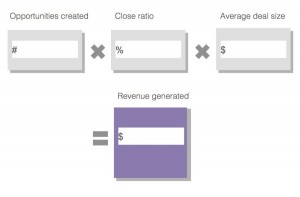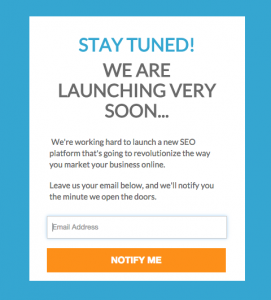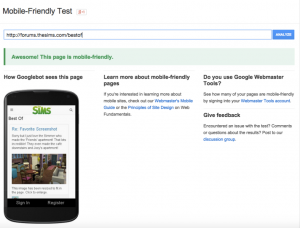
Every time you type something into a search engine, the results you receive are a result of a series of title tags and meta descriptions. For online brands, it’s critical to properly customize and brand these tags. After all, they are essentially your organic search advertising offering, and you want them to pull in traffic that converts into sales.
By implementing best practices and displaying powerful and descriptive information, you are seizing the opportunity to set yourself apart in search engine results and entice shoppers to enter the “front door” of your online business.
How do you make yourself the most compelling? How do you know where to place the keywords and which ones to target? Where do you start so you can begin ranking well? How can you add customer-centric information including product reviews and prices to these search results? Never fear, we have those answers.

Optimize Your Title Tags
Title tags have long been revered as one of the most important SEO elements. Implementing best practices for title tags is a low-effort, high-impact SEO task. Not only do they represent each of your pages’ content, they can be leveraged in three key ways: in search engine results, on browser tabs and on external websites like social media networks.

Example: Search Engine Results

Example: Browser Tabs

Example: External Websites
Formatting Guidelines for Title Tags
Since title tags play such a pivotal role in search engine optimization, it’s very important to follow the specific guidelines that have been set. Here are recommendations for optimizing title tags for search engines as well as for potential shoppers:
- Length: Keep the length of your title tag between 50-60 characters. If the title is too long, engines will show an ellipsis –– “…” –– to indicate that a title tag has been cut off.
- Keyword placement: Place primary keywords that you’d like to target toward the front of your title tag. This will not only help you rank, but it also will boost your click-through rate.
- Brand name placement: If your brand is well known enough to be recognized, you’ll want to target it as a keyword as well by placing it toward the front of the title tag. If you’re just starting to sell online, you’ll want to think about either not including your brand name or keeping it at the end of your tag.
In short, keep it simple and don’t over think it. Here is a good structure to adhere to;
“Primary Keywords Secondary Keywords | Brand Name”
“Garlic Olive Oil – Organic | Con’ Olio Oils & Vinegars”
Optimize Your Meta Descriptions
Your meta descriptions can really work to draw potential shoppers to your website from search engines results. This is quite an important marketing tool. Crafting a readable, compelling description using your target keywords will help to improve your click-through rate.
Here are some things can help set yourself apart.
Formatting Guidelines for Meta Descriptions
Be aware, as of 2009, meta descriptions are not technically a ranking factor. However, this does not mean there are not best practices you can follow to receive the very best results.
- Length: Meta descriptions can be any length, but search engines generally truncate snippets longer than 160 characters. It is best to keep meta descriptions between 150 and 160 characters.
- Keyword placement: Again, despite the fact that meta descriptions do not technically help you better rank with search engines, you do want to place your primary keywords that describe what can be found on the page in which it represents. This will help to make for a more user-friendly experience.
- Include perks: Use this section to share some of the advantages of shopping with you over your competitors. Include things detailing how you have been a family owned business since 1972, offer free shipping or even donate a percentage of your earnings to a charity. Whatever sets you apart, include it here as it will entice potential shoppers with whom you message resonates.
How to Start Optimizing
Although search engines typically extract information from your pages and can generate information for you, you should work to customize and brand title tags and meta descriptions for all of your website’s pages.
A best practice for online stores is to start with your homepage and then dive in on your most popular product pages. This plan of action works best for store owners who are looking to build brand awareness, but don’t necessarily have a team dedicated to optimizing their title tags and meta descriptions.
Remember, if you’re just starting your online store, potential shoppers will not be typing in your store’s name to find out. After all, they don’t know it! Instead, they will be typing long-tail keywords into a search box, for example “mens running sneaker size 8.”
Note: Search engines will likely display your best product pages and bring the shopper to that page. This means your product pages will likely see higher user entrances than your other site pages. This is a good thing and when you see this occurring in your analytics, it’s a sign that your product page title tags and meta descriptions are working.
Where to Complete These Fields
No matter what ecommerce platform you are using to sell online, these are the main areas in which you should focus on customizing and branding your title tags and meta descriptions. If you’re on Bigcommerce, we’ve included specifics as to where you can find each field.
- Homepage: Settings > Store Settings > Search Engine Optimization section
- Category pages: Products > Product Categories > Edit > Search Engine Optimization section
- Product Pages: Edit any product or add a product > Other Details Tab > Search Engine Optimization
- You can also export your products into a CSV and complete these fields from a spreadsheet. Remember, each title tag and meta description should be unique so that search engines won’t view it as duplicate content and potentially penalized your site
- Web Content Pages: Content > Web Pages > Edit > here you will find that the title of your page will serve as your title tag. The meta description field lives at the bottom of this page.
- Blog Posts: Content > Blog > here you will find that the title of your post will serve as your title tag. The meta description field lives at the bottom of this page.
Bonus: Include MicroData for the Win
Looking for something a little more advanced? Consider adding microdata to boost your products’ search results. Microdata allows for search engines to include ecommerce details such as product ratings, reviews, price and availability. The benefits are infinite.
You’ll be providing a better shopping experience long before someone even comes to your site, ensuring that your search results stand out and reducing bounce rate for click-throughs. Check out how to take advantage of micro data on Bigcommerce.
(264)
Report Post






